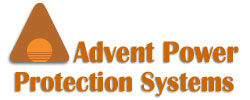Eaton Power 101
Eaton is an Industry Leader in UPS Systems
Cutting edge engineering and legendary quality best describe Eaton’s Powerware UPSs. For decades, Powerware, formerly known as Exide Electronics, has been at the forefront of technological innovation in the field of uninterruptible power supplies. Today, Eaton Powerware products are used in networking, PC, financial, medical, industrial, voice and data communications, military and aerospace applications – wherever continuous power is essential to daily operations.
9 Common Power Problems that can harm computers and data
*Acrobat Reader Required for reading Warranty and Specifications.
Power 101
Power problems can quickly interrupt the traffic flow of data across an enterprise, cripple business operations, and place your infrastructure at risk. By first understanding these power problems, you will ensure that you select the right solution.
Here are some of the most common power supply problems and their likely effects on sensitive electronic equipment:
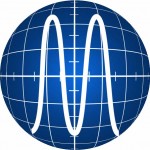 A power surge takes place when the voltage is 110% above normal. The most common cause is heavy electrical equipment being turned off. Under this condition, computer systems may experience memory loss, data errors, flickering lights, and equipment shutoff. High-voltage spikes occur when there is a sudden, rapid voltage peak of up to 6,000 volts. These spikes are usually the result of nearby lightning strikes, but there can be other causes as well. The effects on vulnerable electronic systems can include loss of data and burned circuit boards.
A power surge takes place when the voltage is 110% above normal. The most common cause is heavy electrical equipment being turned off. Under this condition, computer systems may experience memory loss, data errors, flickering lights, and equipment shutoff. High-voltage spikes occur when there is a sudden, rapid voltage peak of up to 6,000 volts. These spikes are usually the result of nearby lightning strikes, but there can be other causes as well. The effects on vulnerable electronic systems can include loss of data and burned circuit boards.
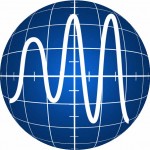 When a power surge is maintained for a length of time it is considered a n over voltage condition.
When a power surge is maintained for a length of time it is considered a n over voltage condition.
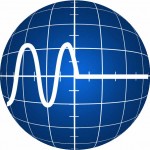 Power failure or blackout is defined as a zero-voltage condition that lasts for more than two cycles. It may be caused by the tripping of a circuit breaker, power distribution failure or utility power failure. This condition can lead to data damage, data loss, file corruption and hardware damage.
Power failure or blackout is defined as a zero-voltage condition that lasts for more than two cycles. It may be caused by the tripping of a circuit breaker, power distribution failure or utility power failure. This condition can lead to data damage, data loss, file corruption and hardware damage.
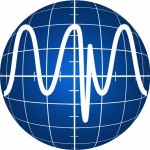 Switching transients take place when there is a rapid voltage peak of up to 20,000 volts with a duration of 10 microseconds to 100 microseconds. They are commonly caused by arcing faults and static discharge. In addition, major power system switching disturbances initiated by the utilities to correct line problems may happen several times a day. Effects can include memory loss, data error, data loss and component stress.
Switching transients take place when there is a rapid voltage peak of up to 20,000 volts with a duration of 10 microseconds to 100 microseconds. They are commonly caused by arcing faults and static discharge. In addition, major power system switching disturbances initiated by the utilities to correct line problems may happen several times a day. Effects can include memory loss, data error, data loss and component stress.
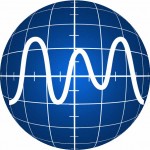 Power sags involve voltages 80 to 85 percent below normal for a short period of time. Possible causes are heavy equipment being turned on, large electrical motors being started, and the switching of power mains (internal or utility). A power sag can have effects similar to those of a power surge, such as memory loss, data errors, flickering lights and equipment shutoff.
Power sags involve voltages 80 to 85 percent below normal for a short period of time. Possible causes are heavy equipment being turned on, large electrical motors being started, and the switching of power mains (internal or utility). A power sag can have effects similar to those of a power surge, such as memory loss, data errors, flickering lights and equipment shutoff.
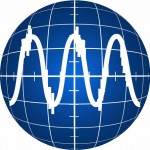 Electrical line noise is defined as Radio Frequency Interference (RFI) and Electromagnetic Interference (EMI) and causes undesirable effects in the circuits of computer systems. Sources of the problem include electric motors, relays, motor control devices, broadcast transmissions, microwave radiation, and distant electrical storms. RFI, EMI and other frequency problems can cause data error, data loss, storage loss, keyboard lockup and system lockup.
Electrical line noise is defined as Radio Frequency Interference (RFI) and Electromagnetic Interference (EMI) and causes undesirable effects in the circuits of computer systems. Sources of the problem include electric motors, relays, motor control devices, broadcast transmissions, microwave radiation, and distant electrical storms. RFI, EMI and other frequency problems can cause data error, data loss, storage loss, keyboard lockup and system lockup.
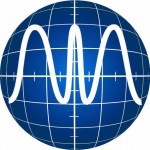 A frequency variation involves a change in frequency from the normally stable utility frequency of 50 Hz or 60 Hz, depending on the geographic location. This may be caused by erratic operation of emergency generators or unstable frequency power sources. For sensitive electronic equipment, the result can be data corruption, hard drive crash, keyboard lockup and program failure.
A frequency variation involves a change in frequency from the normally stable utility frequency of 50 Hz or 60 Hz, depending on the geographic location. This may be caused by erratic operation of emergency generators or unstable frequency power sources. For sensitive electronic equipment, the result can be data corruption, hard drive crash, keyboard lockup and program failure.
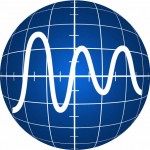 A Brownout is a steady lower voltage state. An example of a brownout happens during peak electrical demands in the summer, when utilities can’t always meet the requirements and must lower the voltage to limit maximum power. When this happens, computer systems can experience data corruption, data loss and premature hardware failure.
A Brownout is a steady lower voltage state. An example of a brownout happens during peak electrical demands in the summer, when utilities can’t always meet the requirements and must lower the voltage to limit maximum power. When this happens, computer systems can experience data corruption, data loss and premature hardware failure.
 Harmonic distortion is the change in the waveform of the supply voltage from the ideal sinusoidal waveform. It is caused by the interaction of distorting customer loads with the impedance of the supply network. Its major adverse effects are the heating of induction motors, transformers and capacitors and the overloading of neutrals. Power factor correction capacitors can amplify harmonics to unacceptable values in the presence of harmonic distortion. Standards specify the major harmonic voltages which can occur on the network, 5% total harmonic distortion being typical. A number of harmonic mitigation techniques are listed to be used where the limits in the standards are exceeded.
Harmonic distortion is the change in the waveform of the supply voltage from the ideal sinusoidal waveform. It is caused by the interaction of distorting customer loads with the impedance of the supply network. Its major adverse effects are the heating of induction motors, transformers and capacitors and the overloading of neutrals. Power factor correction capacitors can amplify harmonics to unacceptable values in the presence of harmonic distortion. Standards specify the major harmonic voltages which can occur on the network, 5% total harmonic distortion being typical. A number of harmonic mitigation techniques are listed to be used where the limits in the standards are exceeded.
